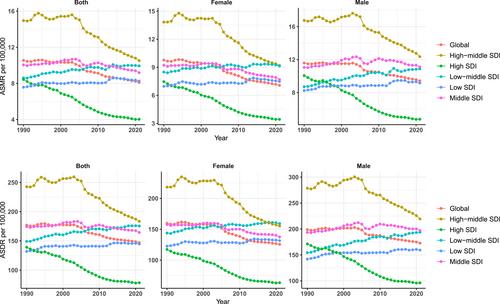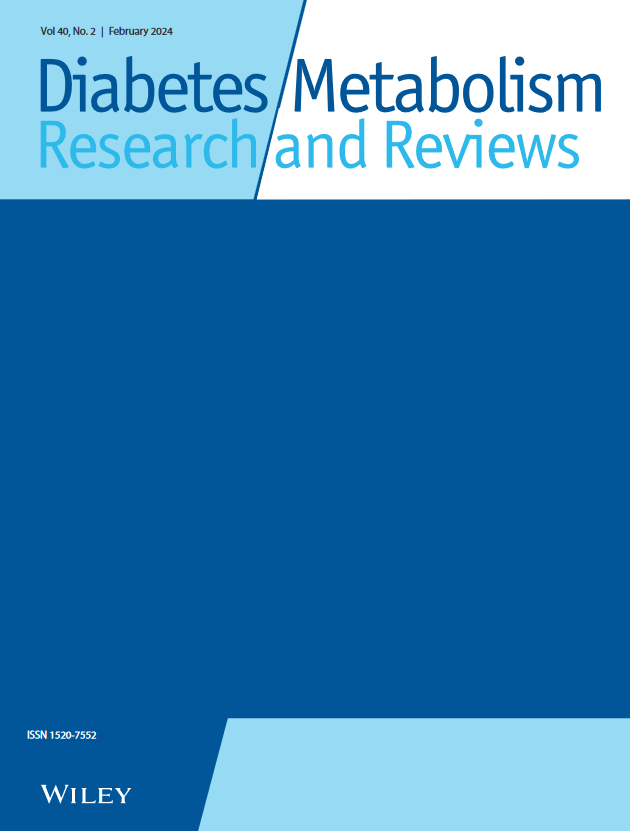Global, Regional, and National Burden of Ischaemic Stroke Attributed to High Fasting Plasma Glucose: An Analysis of Data From 1990 to 2021
Abstract
Background
The role of high fasting plasma glucose (HFPG) in ischaemic stroke (IS) has become increasingly prominent. Our study aimed to assess the global and regional distribution of the burden of IS attributable to HFPG (IS-HFPG) and to predict the disease burden of IS-HFPG to 2041.
Methods
This study extracted the data on the burden of IS-HFPG, including the number and age-standardized rate of deaths and disability-adjusted life years (DALYs) from the Global Burden of Disease Study (GBD) 2021. Joinpoint analysis was used to assess trends in IS-HFPG burden between 1990 and 2021. Further analyses were stratified by region, sex, and age groups.
Results
In 2021, the number of deaths and DALYs related to IS-HFPG reached 0.65 million and 12.37 million, respectively. From 1990 to 2021, the global age-standardized mortality rate (ASMR) and DALY (ASDR) for IS-HFPG declined, with an Average Annual Percentage Change (AAPC) of −0.96 (95% CI: −1.06, −0.86) and −0.72 (95% CI: −0.81, −0.62), respectively. Regionally, the ASMR and ASDR were highest in High-middle SDI and lowest in High SDI. ASMR were higher for males than for females, with rates of 9.43 per 100,000 (95% UI: 7.31, 11.75) and 7.07 per 100,000 (95% UI: 5.35, 8.96), respectively. Age-stratified analysis indicates that the elderly population, particularly those over 70 years old, bears the heaviest burden.
Conclusions
Our research indicates that the global ASMR and ASDR attributable to IS-HFPG has a declining trend. However, developing regions confront a burden of mortality and disability associated with IS-HFPG. Notably, male and the elderly are the primary demographics affected by IS-HFPG. Our study underscores the necessity for regions to formulate targeted prevention and treatment strategies that address the specific needs of diverse populations, particularly in low- and middle-income countries.


 求助内容:
求助内容: 应助结果提醒方式:
应助结果提醒方式:


